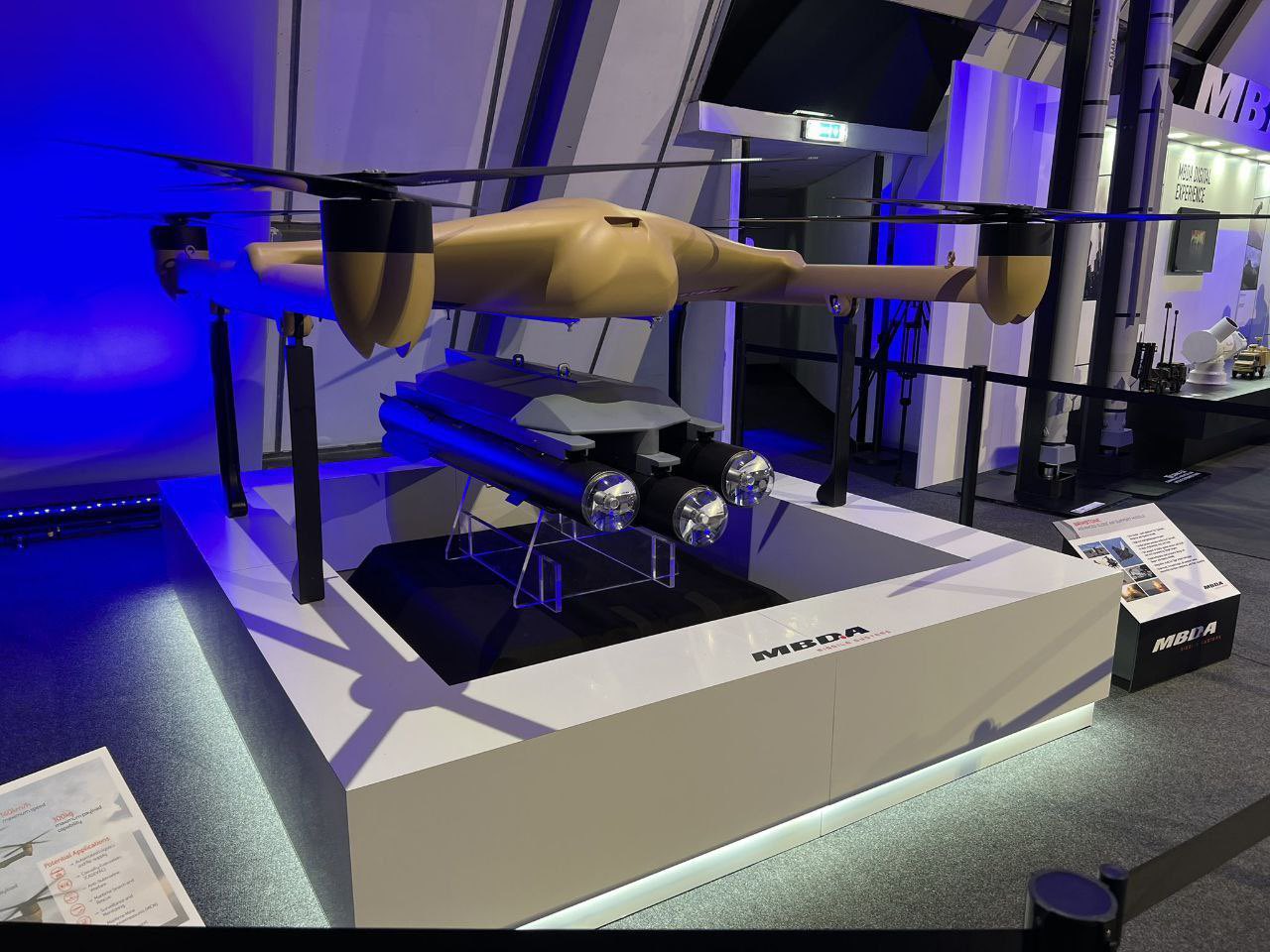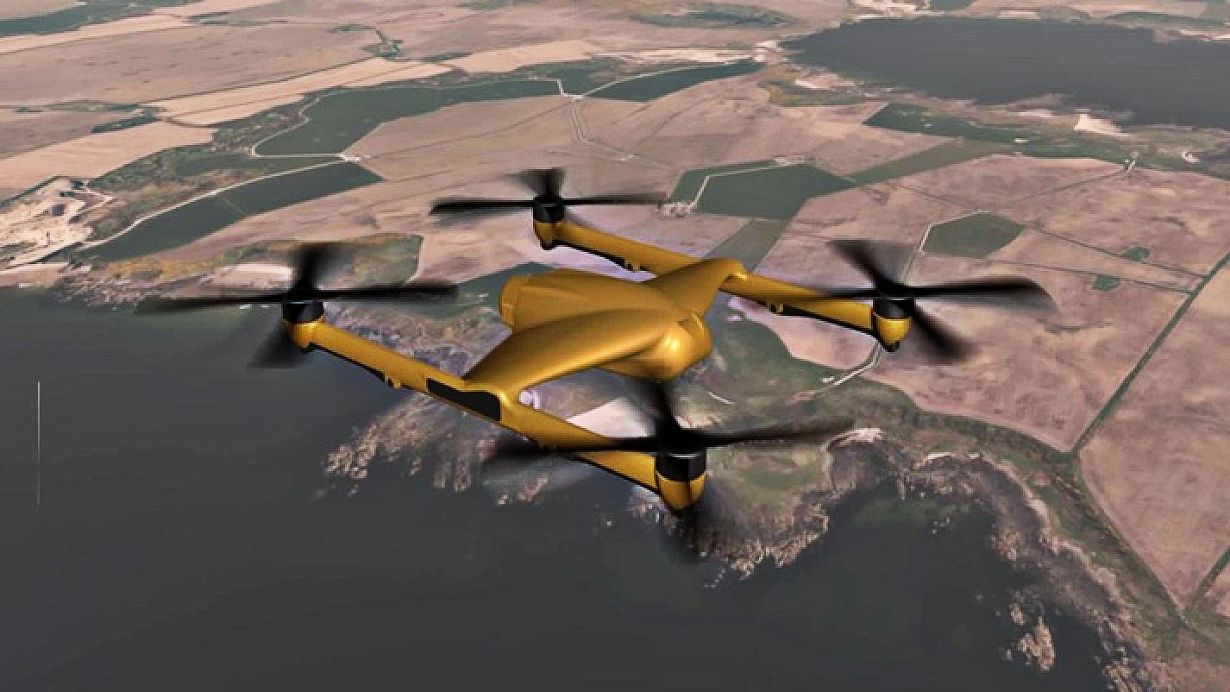British Aerospace Engineering (BAE) and drone firm Malloy Engineering have revealed a heavy-lift drone concept that can carry either a trio of air-to-ground missiles or torpedoes besides a range of basic tactical battlefield attack, logistical, and surveillance roles.
Advantage LCA Tejas? Philippines Grounds Korean FA-50 Fighters; Both Jets Are Competing For Malaysian & Egyptian Contracts
Irony Or What? After ‘Dumping’ Aircraft Carrier, South Korea Plans To Develop A Naval Version Of F-21 Fighters
The T-650 was first displayed with three Brimstone missiles at the Defense Vehicle Dynamic exhibition. So far, the quadcopter drone with eight rotors – two contra-rotating/co-axial on each arm – seems to be only a concept, with reports of its operational deployment remaining unconfirmed.

The drone was first revealed in September 2021 at the Defense and Security Equipment International exhibition, with a tweet showing a BAE-made Sting Ray torpedo mounted on its undercarriage, with the drone’s mock-up itself suspended from the top.
This indicated that the Unmanned Aerial Vehicle (UAV) was still a concept. BAE Systems and Malloy Engineering call this a “plan to explore the development of an all-electric ‘heavy lift’ uncrewed air system (UAS) as a potential new solution to deliver cost-effective, sustainable rapid response capability to military, security, and civilian customers.”
The final drone is expected to have a top speed of 140 kilometers per hour and the ability to carry a class-leading 300-kilogram payload with a range of 30 kilometers. The platform envisaged could be used for various applications like ship-to-ship and ship-to-shore movements to support military and security operations and logistics.
“Emitting zero carbon, the uncrewed system could help revolutionize military operations where there is a requirement to carry heavy loads, helping to keep military personnel out of harm’s way in dangerous situations or disaster zones while reducing the environmental impact of our armed forces,” the article on the BAE website said.
The platform being still in the design and conceptual stage is directly alluded to when the article says that the “companies are exploring opportunities to collaborate on capability, design, manufacture, and marketing of the concept vehicle (with) through increased investment in research and development, as well as working with industry partners, SMEs, and academia.”
What Can The Drone Do?
The brochure of the UAV of the platform says the drone is expected to undertake automated logistics and resupply, close air support, maritime search and rescue, casualty evacuation (CASEVAC), surveillance and monitoring, anti-submarine warfare, and naval mine-countermeasures.
The naval role was revealed in a tweet by the handle @ClearBlueSee on May 5 this year, which showed three Malloy TRV-150 lined up one behind the other on the flight deck of what looks like a Royal Navy aircraft carrier – based on the ski-ramp.
The three UAVs were carrying a torpedo, each slung underneath, with the handle claiming that “Great Britain sending Malloy Aeronautics heavy-lift aircraft and Anti-Ship Torpedo Drones to Ukraine.” This information could not be verified in an official statement from the UK or Ukraine. Neither was military action on Russian Navy vessels attributed to the system.
Going by the September 2021 photo where T-650 carried the Sting Ray in its undercarriage expands the range of a ship to hunt submarines, mainly offering smaller vessels more flexibility since the drone takes up little space.

Heavy Lift Drones – Mother Concept
The British military tested Malloy’s TRV-150 in July 2021 for battlefield resupply of blood and ammunition, using six medium-heavy lift UAVs during the Autonomous Advance Force 4.0.
“The drones were tasked with tactically resupplying commandos with everything from ammunition to blood,” said a release from the Royal Navy.
Interestingly, the TRV-150 was accompanied by other unmanned systems, underwater and surface and loitering munitions, that undertook everything from sub-surface scanning for mines to attacking enemy installations like missile and radar sites.
Drones like the T-650, even if made semi-autonomous to shuttle between pre-set coordinates, can significantly enhance tactical resupply, logistics, and even medevac activities, reducing the cumulative load of such minor yet critical tasks on ground troops.
Even if they can’t completely replace human soldiers, assigning them a part of the tasks in non-complex and less intense combat situations frees up critical manpower that acts as a force multiplier. Naturally, such primary usage allows for further technical and doctrinal enhancement.
This is not to mention that even if they are vulnerable, their presence presents an additional target to the enemy complicating his battlefield calculus, who might have to choose between engaging the UAVs or other fighting forces.
Lastly, one cannot ignore the biological advantage of absolute fatigue-less capability, which does take a toll on troops, especially in high-intensity combat scenarios.
A single human operator, possibly from the logistics branches of ground armies, can easily control a swarm of drones. While communicating with one another, they can be brought to a remote location delivering either blood, ammunition, or rations.
Whether the ‘logistic drones’ will positively impact the battlefield and alleviate pressure on manned troops remains to be seen. But they nevertheless hold a promising future if their technology and economics are harmonized.
- The author can be reached at satamp@gmail.com
- Follow EurAsian Times on Google News




